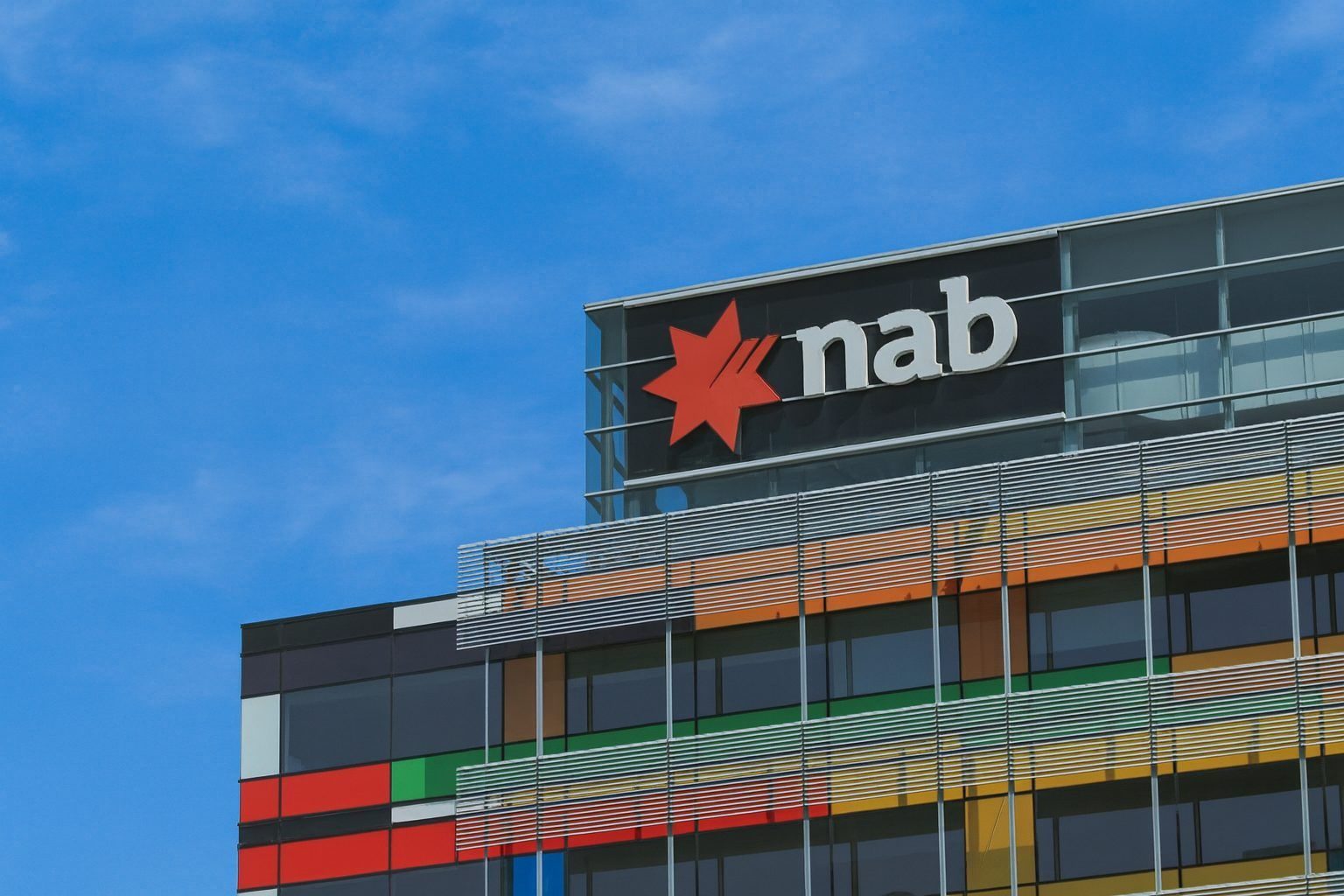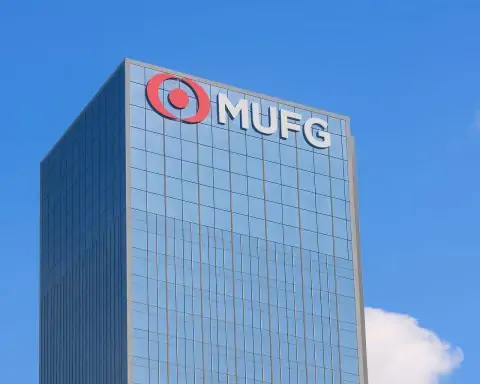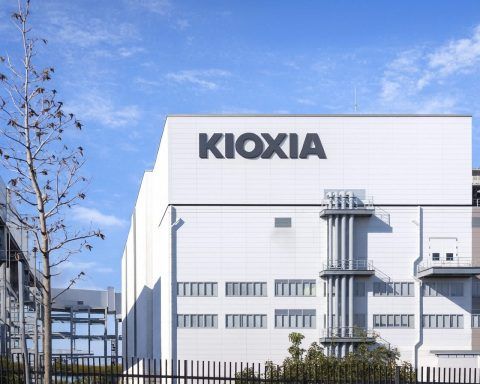National Australia Bank Limited (ASX: NAB) heads into Thursday, 27 November 2025, with its share price hovering around A$40.4 after a steady pullback through November and fresh regulatory pressure on higher‑risk mortgage lending.
As of Wednesday’s close, NAB shares were trading at about A$40.38, down around 0.6% on the day and roughly 9–10% lower over the past month, according to MarketIndex’s ChartWatch scans and end‑of‑day data from major price providers. [1] Year‑to‑date, however, the stock remains modestly ahead, with Intelligent Investor data showing a gain of around 9.5% in 2025. [2]
At the same time, NAB is at the centre of several big stories today: regulatory caps on risky home loans, a pullback from high‑leverage property investors using trusts, and fresh messaging from its own economists that further rate cuts are unlikely while inflation stays elevated. [3]
Below is a detailed look at what’s moving the NAB share price on 27 November 2025 — and what it may mean for investors watching one of Australia’s big four banks.
NAB share price today: level, range and valuation snapshot
Last close and recent moves
- Last close (26 November 2025): around A$40.4 per share, down about 0.6% on the session. [4]
- 1‑month performance: ChartWatch flags NAB as roughly 9.5% lower over the past month. [5]
- 12‑month performance: Up a modest 0.8% year‑on‑year, indicating that most of the share price damage has occurred in recent weeks. [6]
52‑week trading range and YTD performance
Across the last year, NAB has traded in a 52‑week range between about A$31.13 and A$45.25, putting the current price closer to the middle of that band. [7] Intelligent Investor data shows NAB starting 2025 near A$37.10 and now sitting around A$40.38, for a 9.5% gain year‑to‑date. [8]
Valuation and earnings
- GuruFocus estimates NAB’s price‑to‑earnings ratio (P/E, trailing 12 months) at around 18.5, based on a share price of A$40.63 and diluted EPS of A$2.19. [9]
- That places NAB in a mid‑teens to high‑teens P/E range — not bargain‑basement, but not extreme for a major Australian bank with a strong dividend record.
NAB also remains a popular income stock, with recent dividends of A$0.85 per share fully franked for both its interim and final 2025 payouts, and a final dividend scheduled for payment on 12 December 2025. [10]
Technical picture: NAB lands on ChartWatch’s “downtrends” list
From a purely chart‑based lens, NAB is on the wrong side of momentum this morning.
MarketIndex’s ChartWatch ASX Scans — a daily technical report compiled by analyst Carl Capolingua — lists National Australia Bank (ASX: NAB) in today’s “interesting downtrends” group. The scan records: [11]
- Last Price: A$40.38
- 1‑month change:‑9.5%
- 1‑year change:+0.8%
ChartWatch also highlights NAB among the “strongest excess supply” names in the downtrend list, alongside stocks such as Ebos Group and Temple & Webster. [12] In chartist language, that implies selling pressure still dominates, with rallies being sold into rather than bought.
For short‑term traders and technically oriented investors, this positioning typically argues for caution until the trend clearly stabilises. Long‑term investors, by contrast, may see a pullback from early‑November highs near A$45.25 as part of the normal post‑results digestion phase. [13]
Macro backdrop: global risk rally, but local banks lag
Broad market sentiment around the ASX today is constructive. MarketIndex’s Morning Wrap notes that ASX 200 futures were up about 0.24% at the open, following a strong night on Wall Street and record highs on Canada’s TSX as gold and silver rallied. [14]
Globally, traders are pricing in a US Fed rate cut in December, according to a Capital Brief newsletter, which reports rising odds of easing and a fourth consecutive winning session for major US indices. [15]
Despite that upbeat macro tone, Australia’s big banks — including NAB — have underperformed the index in November, as investors reassess their earnings outlook after full‑year results and ahead of tighter credit conditions in the housing market.
APRA’s new 20% cap on high debt‑to‑income home loans
One of today’s most significant developments for bank stocks is regulatory, not company‑specific.
Capital Brief reports that the Australian Prudential Regulation Authority (APRA) has announced a 20% cap on new home loans with debt‑to‑income (DTI) ratios of six times or more, effective 1 February next year. [16] Key points include:
- APRA has seen a rise in high‑DTI lending, especially to property investors, as rates have fallen from their peaks and housing credit growth has picked up. [17]
- From February, authorised deposit‑taking institutions (ADIs) will be allowed to write no more than 20% of new mortgage lending at DTI ≥ 6, with separate caps for owner‑occupiers and investors. [18]
- APRA says the limit is not yet binding at an aggregate level, but is intended as a guardrail to stop riskier lending from overheating the housing market. [19]
For NAB, which has been growing both owner‑occupier and investor lending in recent years, [20] the new cap is another constraint on high‑leverage segments of its mortgage book. While the regulator emphasises that credit availability shouldn’t change materially in the near term, markets often price in future profitability implications early, especially for banks that have leaned more heavily into investor lending.
NAB and Westpac cool on high‑risk trust lending
Adding to that regulatory theme, NAB is directly named in a major story about riskier property borrowers today.
Capital Brief reports that National Australia Bank and Westpac are actively reviewing their lending to property investors who use trusts and company structures to boost borrowing capacity. [21] The key context:
- Macquarie has already stopped lending to trusts and companies in this part of the mortgage market.
- Commonwealth Bank has tightened its own rules, while ANZ previously moved by hiking rates on structured investor loans. [22]
- Together, this means all four major banks are pulling back to varying degrees from what Capital Brief describes as “one of the most speculative parts of the property market.” [23]
Investors using trusts and companies — often guided by aggressive buyer’s agents — have become a fast‑growing cohort in the property market, taking on high leverage to build portfolios quickly. [24]
For NAB shareholders, this story cuts both ways:
- On the risk side, retreating from highly leveraged borrowers could temper loan growth and fee income in a profitable niche.
- On the prudence side, stepping back from speculative lending should improve the bank’s long‑term risk profile, particularly if property prices stumble or rates stay “higher for longer” than markets expect.
The same trust‑lending theme also appears as a key bullet in Capital Brief’s Standup morning newsletter, underscoring how central it’s become to the banking narrative today. [25]
NAB’s economists: “Further rate cuts unlikely amid high inflation”
On the interest‑rate front, NAB’s own economists are adding to the sense that bank margins may stay supported by relatively high rates, but loan growth could be constrained.
A piece in The Adviser today summarises a webinar in which NAB chief economist Sally Auld walked brokers through revisions to the bank’s cash‑rate forecasts, arguing that further rate cuts are unlikely in the near term while inflation remains high. [26]
That message aligns with:
- NAB’s recent Business Survey, which showed business conditions at their strongest since early 2024 but persistent price pressures and easing sentiment. [27]
- The bank’s own full‑year results commentary, which emphasised a challenging environment but still solid credit quality and steady earnings. [28]
For the share price, a “no more cuts for now” view typically means:
- Net interest margins (NIMs) might hold up better than if rates fell sharply.
- Borrowers under stress from higher repayments could find it harder to get relief, reinforcing regulators’ desire to cap riskier lending and tighten standards.
Fundamental backdrop: flat profit, softer sentiment after FY25 results
Much of today’s trading in NAB still sits in the shadow of its 2025 full‑year results, released on 6 November 2025.
Key takeaways from recent coverage:
- NAB reported cash earnings of about A$7.09 billion, essentially flat on the previous year and slightly below market expectations. [29]
- ABC News and Reuters both highlighted that the share price fell around 4% on results day, with CEO Andrew Irvine once again stressing that housing is Australia’s “biggest societal and policy challenge” and calling for faster planning and decision‑making to boost supply. [30]
- Proactive Investors notes that Morgan Stanley cut NAB to “equal‑weight” following the result, citing the flat profit profile. [31]
Since touching a record high near A$45.25 in early November, NAB has drifted lower to about A$40–41, a fall of roughly 10–12% over the month. [32]
Put together with today’s macro and regulatory headlines, that drop looks less like a sudden shock and more like a multi‑factor de‑rating driven by:
- Slower earnings growth
- Growing regulatory constraints on riskier lending
- Investor concern over the housing cycle and mortgage competition
What today’s news means for NAB shareholders
Short‑term sentiment: cautious but not panicked
- Being on the ChartWatch downtrends list and trading about 10% below recent highs reinforces a cautious short‑term tone among technically minded traders. [33]
- The APRA DTI cap and trust‑lending pullback suggest that future loan growth may be more constrained at the higher‑risk, higher‑margin end of the property market. [34]
Medium‑term fundamentals: resilience with clear risks
On the other hand:
- NAB still sits near the middle of its 52‑week range, not at the extremes, and remains profitable, well‑capitalised and dividend‑paying. [35]
- Business conditions in the broader economy, as captured by the NAB Business Survey, are at their best levels since early 2024, even if sentiment has cooled and inflation risks linger. [36]
- A P/E in the mid‑teens to high‑teens is not especially stretched versus history for a big four bank, particularly one still offering a franked yield that income investors find attractive. [37]
The biggest questions investors will likely focus on after today’s developments are:
- How much profit drag will come from tighter lending rules?
- Caps on high‑DTI loans and stricter trust lending standards may limit growth in some of the more lucrative segments of the mortgage market. [38]
- Can NAB offset slower loan growth with fee income and cost control?
- Recent commentary on FY25 results has emphasised a “steady but tough” environment, where cost management and disciplined capital allocation become key to sustaining returns. [39]
- What happens if the housing market slows?
- With CEOs and regulators alike warning about high household debt and housing affordability, investors will watch closely for any signs that arrears or impairments creep higher in 2026. [40]
Key upcoming dates and events for NAB investors
A few diary items to keep in mind as today’s headlines play out:
- Final dividend payment date:
- 12 December 2025 – A$0.85 per share, fully franked, to shareholders on the register after the 11 November ex‑div date. [41]
- 2025 Annual General Meeting (AGM):
- Scheduled for 12 December 2025, with Computershare listing a dedicated virtual meeting portal for NAB shareholders. [42]
- APRA DTI cap effective date:
- 1 February 2026 – the new 20% limit on high DTI loans formally kicks in, potentially influencing mortgage growth strategies across all big banks, including NAB. [43]
Bottom line
On 27 November 2025, National Australia Bank Limited (ASX: NAB) finds itself at the intersection of:
- A technical downtrend and recent share price pullback
- A regulatory clamp‑down on high‑risk mortgage lending
- A cautious rates outlook from its own economists, with inflation still uncomfortably high
Yet the bank remains solidly profitable, dividend‑paying and only moderately valued relative to its history. For investors, today’s news doesn’t fundamentally change the NAB story — but it does sharpen the focus on credit quality, capital discipline and the sustainability of earnings in a world where policymakers are clearly less tolerant of riskier housing debt.
As always, this article is general information only and not personal financial advice. Anyone considering NAB shares should take into account their own objectives, financial situation and risk tolerance, and consider speaking with a licensed financial adviser before making investment decisions.
References
1. www.marketindex.com.au, 2. www.intelligentinvestor.com.au, 3. www.capitalbrief.com, 4. www.investing.com, 5. www.marketindex.com.au, 6. www.marketindex.com.au, 7. www.investing.com, 8. www.intelligentinvestor.com.au, 9. www.gurufocus.com, 10. www.marketindex.com.au, 11. www.marketindex.com.au, 12. www.marketindex.com.au, 13. www.tradingview.com, 14. www.marketindex.com.au, 15. www.capitalbrief.com, 16. www.capitalbrief.com, 17. www.capitalbrief.com, 18. www.capitalbrief.com, 19. www.capitalbrief.com, 20. www.nab.com.au, 21. www.capitalbrief.com, 22. www.capitalbrief.com, 23. www.capitalbrief.com, 24. www.capitalbrief.com, 25. www.capitalbrief.com, 26. www.theadviser.com.au, 27. www.proactiveinvestors.com, 28. www.nab.com.au, 29. www.montinvest.com, 30. www.abc.net.au, 31. www.proactiveinvestors.com.au, 32. www.tradingview.com, 33. www.marketindex.com.au, 34. www.capitalbrief.com, 35. www.investing.com, 36. www.proactiveinvestors.com, 37. www.gurufocus.com, 38. www.capitalbrief.com, 39. www.montinvest.com, 40. www.reuters.com, 41. www.marketindex.com.au, 42. apps.computershare.com, 43. www.capitalbrief.com









